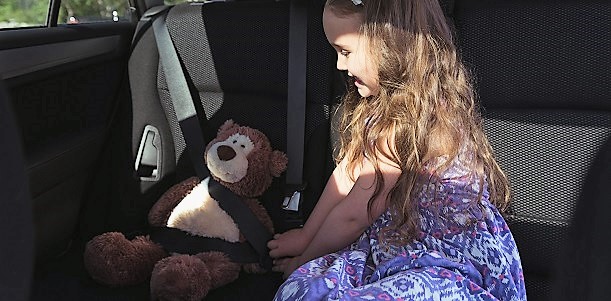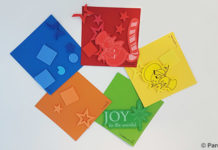Age
2-5 years
Duration of activity
This activity will take just 5-10 minutes.
Materials/equipment
- A car seat
- A doll that is an appropriate size for the car seat
Cost
You won’t need to buy anything to do this activity.
Preparation
Ensure your child’s car seat is correctly installed in your car.
What to do
- This activity involves your child fastening a doll in their car seat.
- Start the activity by talking to your child about car seats and why children need to be correctly fastened in a car seat when travelling in a car. For example, talk about how children are too small to be held securely in the adult seat belt. Talk to them about how they feel about their car seat.
- Get your child to put the doll in the car seat and make sure that they put it in facing forwards.
- Before you fasten the straps, ask your child to try to remove the doll from the chair, so they understand how easy it is for the doll to move when the straps are not secured. Ask them what they think would happen to the doll if you were driving and had to slam on the brakes and/or why it’s important to fasten the doll’s seatbelt. Challenge them to solve the problem of the doll not being secured, to help them work out for themselves why it’s important to wear a seatbelt.
- Show your child how they should strap the doll in, making sure that the straps are tight but not tangled.
- Let your child have a go, guiding them as they do so.
- Have your child check that the straps are not hooked or caught on anything.
- Emphasise the importance of hearing the buckle click, letting your child fasten it a few times. Insert the clasps into the buckle but do not let the buckle click, then ask your child to try to pull the straps out. Then click the buckle and ask them to try to pull the straps out again.
- Once the buckle has clicked, ask your child to try to remove the doll from the chair, so they see how the fastened straps secure the doll in the chair.
- Ask your child what they think would happen to the doll if you were driving and had to slam on the brakes.
- Make sure to tell them to never unclick their buckle when you are driving, and to let Mum or Dad do it when you have finished driving.
- When you are finished, congratulate your child for making sure their doll is safe before its car journey.
Tips
 This is a game you can repeat when your child is old enough use a seatbelt without a restraint or booster seat.
This is a game you can repeat when your child is old enough use a seatbelt without a restraint or booster seat.- If they have another younger sibling, when you put them in their restraint you can involve them by showing them that the straps are untangled and getting them to listen for the buckle click.
- When you travel in the car, remind your child of the importance of sitting in their booster seat, and not fiddling with the buckle, before you start driving.
Educational outcomes
Car safety
This role play is a great way to increase your child’s awareness of the importance of car safety and universal rules like wearing a seat belt. As you talk to them about the importance of making sure their doll is correctly secured in the care, they’ll also be learning about the importance of sitting, correctly fastened in their car safety chair.
Reasoning and problem solving
Learning about the reasons why it is important for a doll or child to be securely fastened while driving, will help your child understand cause and effect, which is the basis of understanding the reasons why we do certain things like wear a seat belt. As you show your child how easy it is for the doll to move when the straps and buckle are not fastened, and how the fastened strapped hold the doll securely in the chair, you’re also teaching them the reason why wearing a seat belt is so important. It will also help them understand that your reasons for insisting they wear a seatbelt and sit in a car seat while driving.
Emotional regulation
Knowing which behaviours are inappropriate is important knowledge that helps children regulate their emotional response, and follow important rules. This game will help young children learn that travelling without a seat belt is not a possibility, and contribute to them developing appropriate emotional responses (i.e. putting on their seat belt instead of having a tantrum). Children begin to develop the ability to judge whether or not their behaviour is appropriate and regulate their emotions accordingly, as young as 18 months old.
Language and communicating skills
As you interact with your child during this game, you’ll also be helping them learn the art of communication. As you speak to each other they will learn about different types of speech like questions and answers, and how to use these effectively in a conversation. They’ll learn the rules that govern social interactions, for example that when someone asks them a question they are supposed to respond. They’ll also learn new words as they hear you say them, and about how the gestures and expressions we make as we converse also ‘say’ things to our listeners. Pronounce words clearly to model good speech behaviours, and take the time to sound out new or difficult words with your child, to help them master the art of speaking and listening.
Motor skills
Placing a doll in a car seat, positioning the straps and fastening the buckling will require your child to use both the large muscles in their arms and the small muscles in their fingers. It will help them develop both the gross and fine motor skills.
References
- Virginia Early Childhood Development Alignment Program. Milestones of child development: A guide to young children’s learning and development from birth to kindergarten. 2013 (cited 8 January 2018). Available from: (URL Link)




 (3 votes, average: 3.67 out of 5)
(3 votes, average: 3.67 out of 5) 






